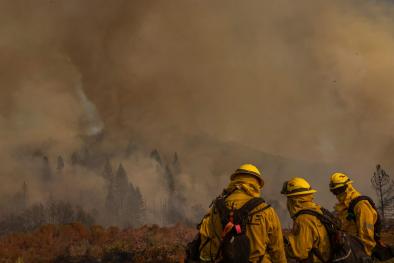Trends in surface equivalent potential temperature: A more comprehensive metric for global warming and weather extremes
Key findings & significance
- If you factor in air moisture along with heat when considering the impacts of global warming, climate change since 1980 is nearly twice as bad as previously calculated
- The Earth has warmed by 1.2 ± 0.1 °C since the preindustrial era; however, surface air temperature alone downplays impacts in the tropics and does not fully describe the nature of global warming and its impact on climate and weather extremes.
- This study shows that surface equivalent potential temperature, which combines the surface air temperature and humidity, is a more comprehensive metric not only for global warming but also for its impact on climate and weather extremes including tropical deep convection and extreme heat waves.
Author quotes
“There are two drivers of climate change: temperature and humidity. And so far we measured global warming just in terms of temperature.”
V. Ramanathan, co-author and climate scientist at the University of California San Diego’s Scripps Institution of Oceanography and Cornell University
According to Ramanathan, by adding the energy from humidity, “the extremes — heat waves, rainfall and other measures of extremes — correlate much better."
That’s because as the world warms, the air holds more moisture, nearly 4% for every degree Fahrenheit (7% for every degree Celsius). When that moisture condenses, it releases heat or energy, “that’s why when it rains, now it pours,” Ramanathan said.
Abstract
Trends in surface air temperature (SAT) are a common metric for global warming. Using observations and observationally driven models, we show that a more comprehensive metric for global warming and weather extremes is the trend in surface equivalent potential temperature (Thetae_sfc) since it also accounts for the increase in atmospheric humidity and latent energy. From 1980 to 2019, while SAT increased by 0.79°C°C, Thetae_sfc increased by 1.48°C°C globally and as much as 4°C°C in the tropics. The increase in water vapor is responsible for the factor of 2 difference between SAT and Thetae_sfc trends. Thetae_sfc increased more uniformly (than SAT) between the midlatitudes of the southern hemisphere and the northern hemisphere, revealing the global nature of the heating added by greenhouse gases (GHGs). Trends in heat extremes and extreme precipitation are correlated strongly with the global/tropical trends in Thetae_sfc. The tropical amplification of Thetae_sfc is as large as the arctic amplification of SAT, accounting for the observed global positive trends in deep convection and a 20% increase in heat extremes. With unchecked GHG emissions, while SAT warming can reach 4.8°C°C by 2100, the global mean Thetae_sfc can increase by as much as 12°C°C, with corresponding increases of 12°C°C (median) to 24°C°C (5% of grid points) in land surface temperature extremes, a 14- to 30-fold increase in frequency of heat extremes, a 40% increase in the energy available for tropical deep convection, and an up to 60% increase in extreme precipitation.
Related Content



